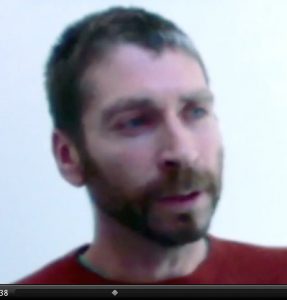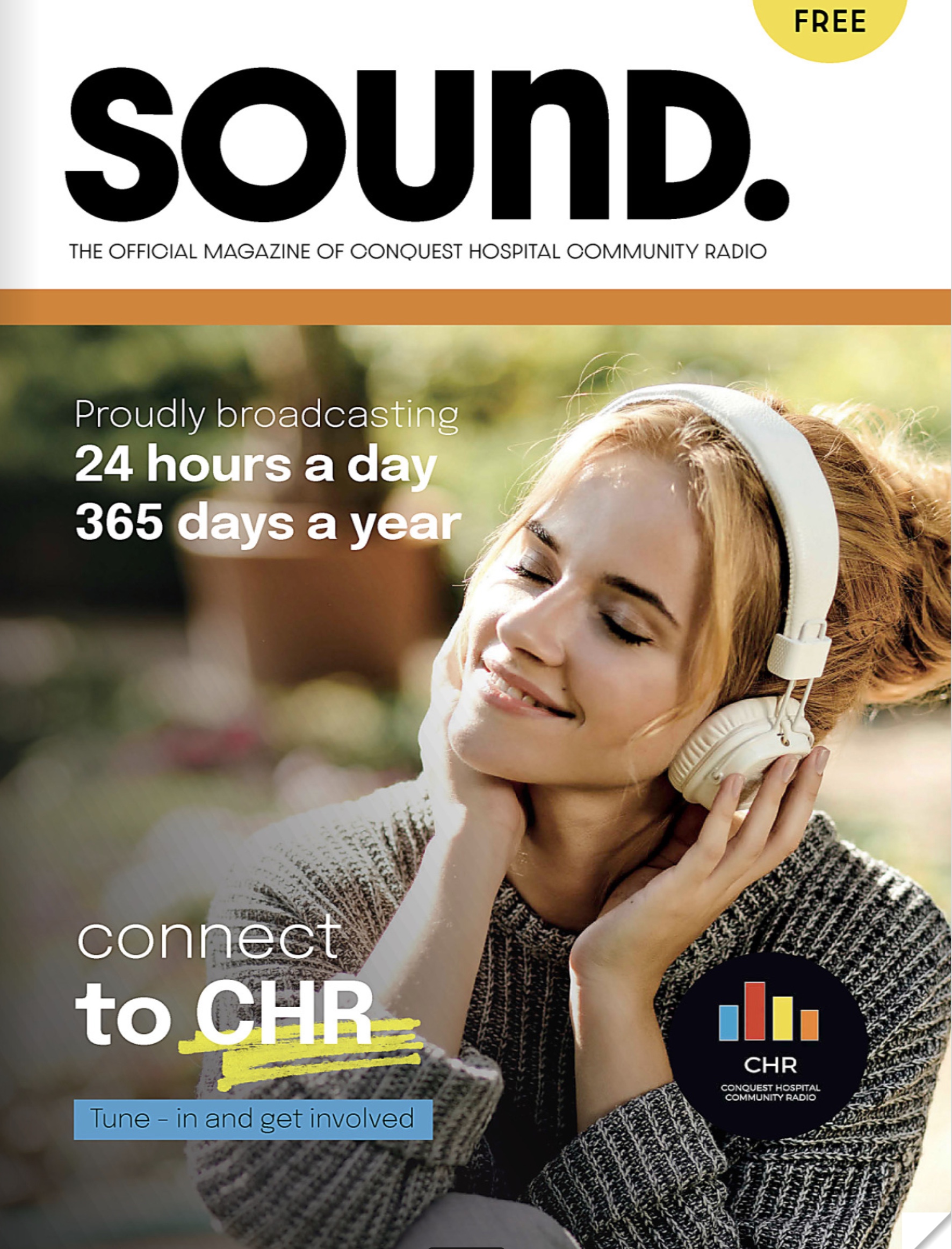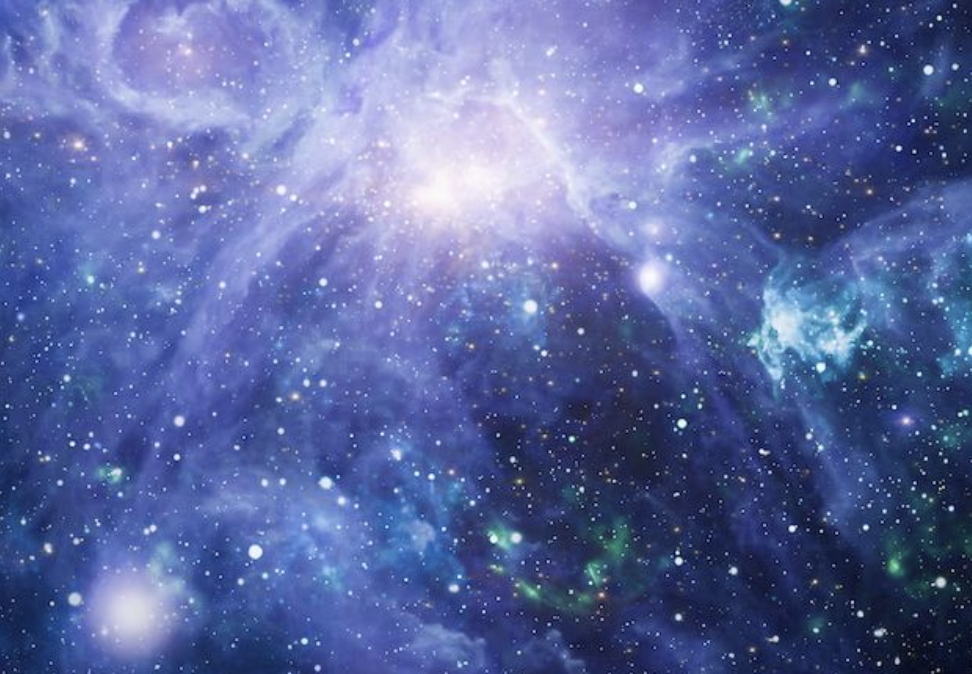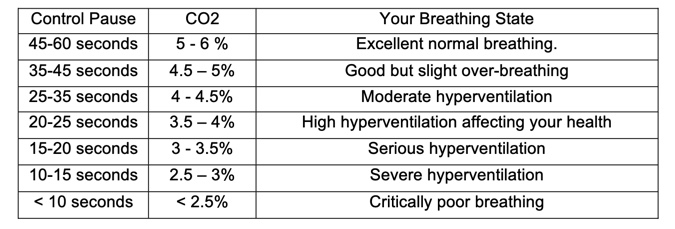
The Breath Connection
“Better breathing means better health”
You may be surprised to discover how many health problems are linked to poor breathing habits, habits we can all learn to change. See below just some of the hundred or more health problems and click on any one of them to learn more.
In this modern world, everyone is agreed that scientific proof of any remedial system or drug is essential before it is made freely available within a health care system. There are two key problems arising from this assumption that both affect the recognition of the effectiveness of the Buteyko Method; the first questions the trust we place in current clinical trials and the way they are constructed and the second is more fundamental, in that the overwhelming majority of clinical trials are funded by drug companies who are unwilling to fund research into a system that has already been shown to considerably reduce the need for drugs.
Watch the BBC video below that demonstrated the effectiveness of the Buteyko Method for Asthma.
Just click on the image:
The video refers to the cost of the Buteyko Training in a class but today you can teach yourself for free with a podcast and an optional accompanying book:
Click on the Podcast Course that is for you and the Course Book below:
 A brief introduction to the work of Professor Konstantin Buteyko. This book highlights the connections between many common diseases and our dysfunctional breathing. You will be able to check your own breathing and discover what signs and symptoms you have may be associated with your poor breathing habits.
A brief introduction to the work of Professor Konstantin Buteyko. This book highlights the connections between many common diseases and our dysfunctional breathing. You will be able to check your own breathing and discover what signs and symptoms you have may be associated with your poor breathing habits.
This book also may be used for your training on the above podcasts as it includes a section for your exercises at the back.
To learn more about the impact of breathing on your health, why not download my free e-book? “The Breath Connection”
Just click on the image below to access:
Did you know that “What you eat affects the wasy you breathe and how you breathe affects what you eat?”
So maybe you should check your diet to help with your breath training?


TotalHealthMatters! has been chosen as one of the first in the UK to participate in a radical new way of screening your nutrition called “Diet ID” Unlike traditional nutritional assessments that can take over an hour of questioning and expensive consultations to follow up, this system can take under a minute to derive a detailed analysis of your diet and offer support and advice to improve it.
Developed by Dr. Katz and now widely used in the USA by doctors and businesses you can try it yourself HERE
Some of the health effects of Chronic Hyperventilation.
Eczema Allergies Itchy Skin
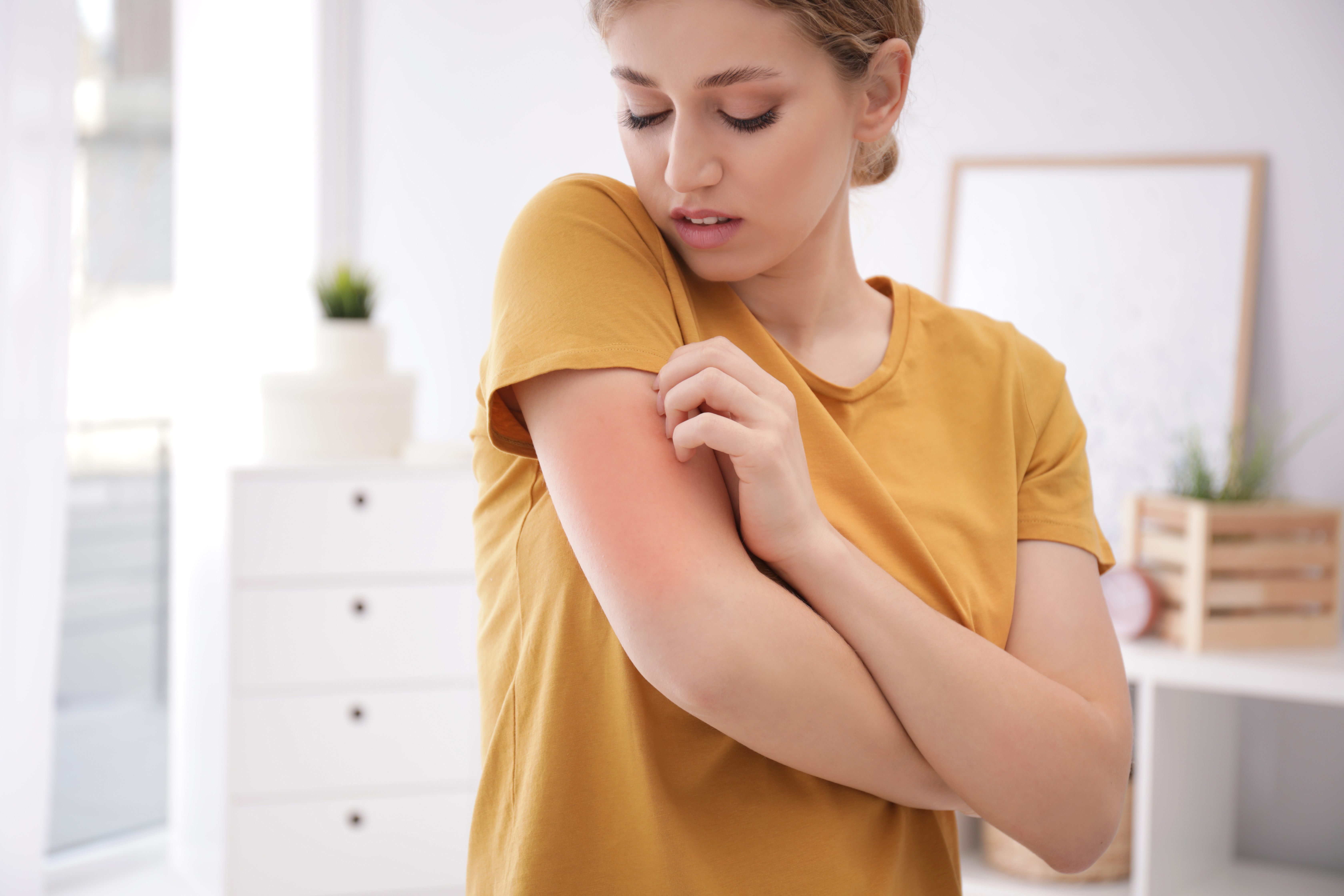
“What can breath training do? The skin is the largest organ in the body and is responsible for perspiration, cool the body, sensation through numerous sense receptors, protection of the body through maintaining a barrier of surface cells, elimination through perspiration and skin eruptions, and absorption of substances through the skin and also self healing itself when damaged. Over-breathing or hyperventilation can impact on the skin in a variety of ways; less oxygen is delivered to the tissue, impaired blood supply leads to reduced nutrient supply, extra histamine produced leads to increased sensitivity and irritation, hormone production is impaired causing skin changes and there is a greater risk of dehydration leading to drying of the skin. Breath training normalizes breathing and reduces all these adverse effects. Eczema and asthma are often found together in some people with atopy. Atopy is a hereditary disorder marked by the tendency to develop immediate allergic reactions to substances such as pollen, food, dander, insect venom and manifested by hay fever, asthma, or similar allergic conditions. It is not uncommon to find suppression on one condition, leads to the exacerbation of another when the underlying cause is not addressed.”
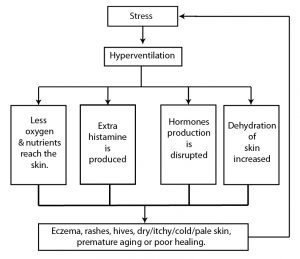
Eczema Allergies Itchy Skin

“What can breath training do?
The skin is the largest organ in the body and is responsible for perspiration, cool the body, sensation through numerous sense receptors, protection of the body through maintaining a barrier of surface cells, elimination through perspiration and skin eruptions, and absorption of substances through the skin and also self healing itself when damaged.
Over-breathing or hyperventilation can impact on the skin in a variety of ways; less oxygen is delivered to the tissue, impaired blood supply leads to reduced nutrient supply, extra histamine produced leads to increased sensitivity and irritation, hormone production is impaired causing skin changes and there is a greater risk of dehydration leading to drying of the skin. Breath training normalizes breathing and reduces all these adverse effects.
Eczema and asthma are often found together in some people with atopy. Atopy is a hereditary disorder marked by the tendency to develop immediate allergic reactions to substances such as pollen, food, dander, insect venom and manifested by hay fever, asthma, or similar allergic conditions. It is not uncommon to find suppression on one condition, leads to the exacerbation of another when the underlying cause is not addressed.
The chart below gives a clearer explanation of the connection between hyperventilation and this condition.

Asthma, Sinusitis, Hay fever & Rhinitis
“What can breath training do for breathlessness?
When we are suffering some degree of hyperventilation that causes poor oxygen delivery to our tissue it triggers a sensation of breathlessness, every attempt to breathe more, increasing the hyperventilation, will worsen the breathless feeling.
It may seem paradoxical or crazy but the fastest way of overcoming this breathlessness is to breathe more gently, to calm and reduce your breathing. This is the training that the Buteyko Method provides. The Chart below gives a simple explanation of this apparent paradox.
The vertical axis represents the degree of tissue oxygenation of the body, the horizontal axis the volume of air breathed per minute.
1. When not breathing there is no oxygenation and as the volume of air breathed increases to around 5-6 litres/min, oxygenation increases to a maximum. With further increased breathing the oxygenation begins to fall until it reaches 15 litres/min when the body responds by inducing a faint or otherwise to re-establish a lower rate of breathing.
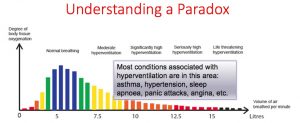
Hyperventilation is a growing problem with ever-increasing numbers of children being diagnosed with asthma and put on medication for life with all the potential health hazards of side-effects on the development and general health. We believe it needn’t be like this and that individuals, young or old, can learn, in just a few weeks, how to take better control themselves with simple lifestyle changes and breathing exercises to correct the dysfunctional breathing. The chart below shows how over-breathing leads to breathing problems.

The Buteyko Method is endorsed by the British Thoracic Society and GINA (Global initiative for asthma for Class A evidence.)”
Eczema Allergies Itchy Skin

“What can breath training do?
The skin is the largest organ in the body and is responsible for perspiration, cool the body, sensation through numerous sense receptors, protection of the body through maintaining a barrier of surface cells, elimination through perspiration and skin eruptions, and absorption of substances through the skin and also self healing itself when damaged.
Over-breathing or hyperventilation can impact on the skin in a variety of ways; less oxygen is delivered to the tissue, impaired blood supply leads to reduced nutrient supply, extra histamine produced leads to increased sensitivity and irritation, hormone production is impaired causing skin changes and there is a greater risk of dehydration leading to drying of the skin.
Breath training normalizes breathing and reduces all these adverse effects. Eczema and asthma are often found together in some people with atopy. Atopy is a hereditary disorder marked by the tendency to develop immediate allergic reactions to substances such as pollen, food, dander, insect venom and manifested by hay fever, asthma, or similar allergic conditions. It is not uncommon to find suppression on one condition, leads to the exacerbation of another when the underlying cause is not addressed. Diet and the Food Connection are usually also involved.
The chart below gives a clearer explanation for this connection:

Asthma, Sinusitis, Hay fever & Rhinitis
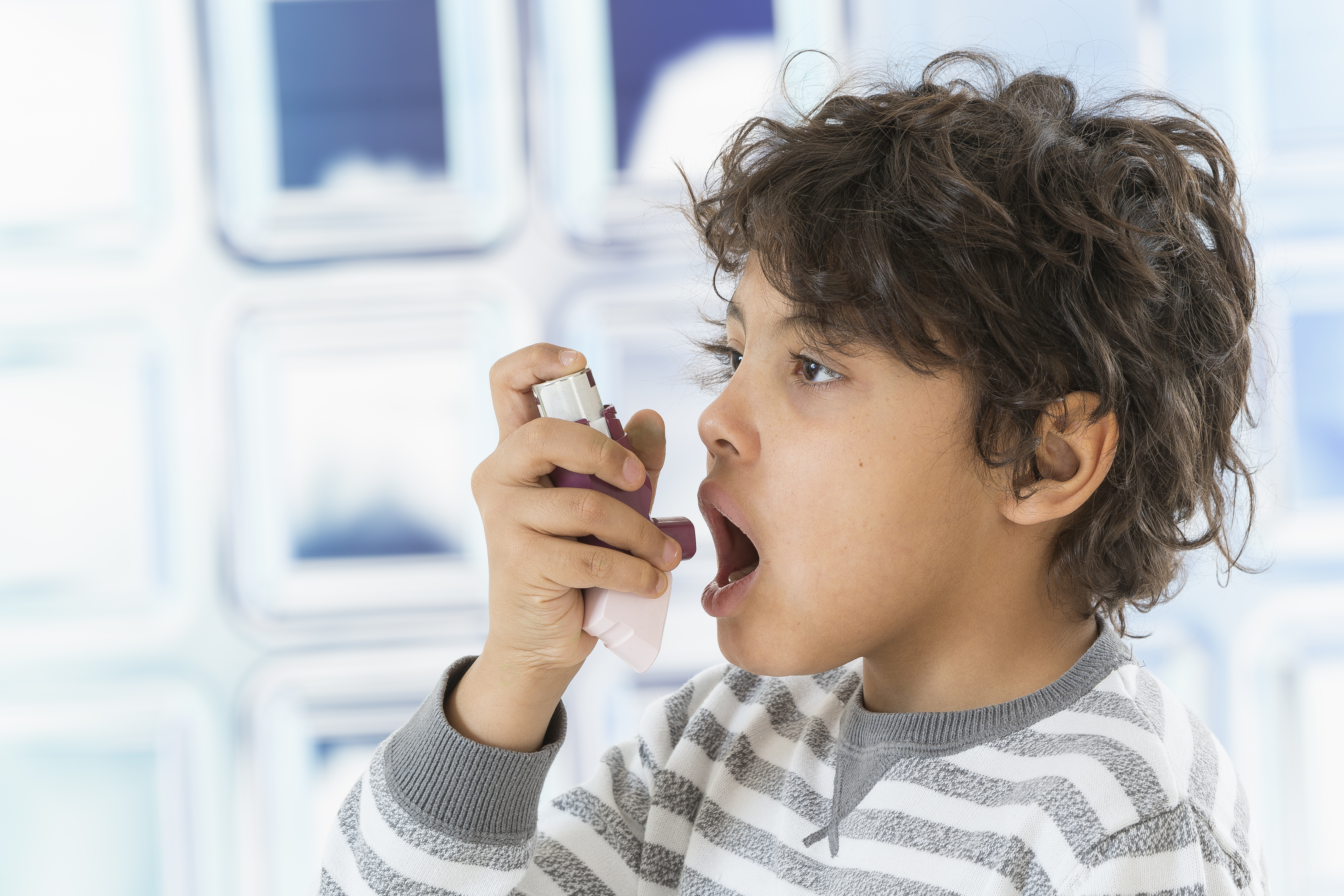
“What can breath training do?
Rhinitis or hay fever is like asthma of the nose and the same advice given for asthmas relief applies here.
Normalizing our breathing will:
Retain the right level of carbon dioxide
Will reduce the quantity of irritants inhaled
Will reduce histamine production and hence sensitivity to irritants
Less air flow through the nose will reduce drying and reduce need for increased mucus
The Buteyko Method of training will improve this condition
Clinical trials have shown the usual benefits include: less wheezing, less coughing, more energy, better sleep, up to 90% less reliever medication needed, up to 50% less preventive medication needed, no adverse side effects, long-lasting benefits after training and a safe jump to a better asthma management.
We are dedicated to improving the management of asthma with clinically proven training methods and lifestyle advice. Asthma is a growing problem with ever-increasing numbers of children being diagnosed and put on medication for life with all the potential health hazards of side-effects on the development and general health. We believe it needn’t be like this and that individuals, young or old, can learn, in just a few weeks, how to take better control themselves with simple lifestyle changes and breathing exercises to correct the dysfunctional breathing.

The Buteyko Method is endorsed by the British Thoracic Society and GINA (Global initiative for asthma for Class A evidence.)
COPD & Emphysema Management
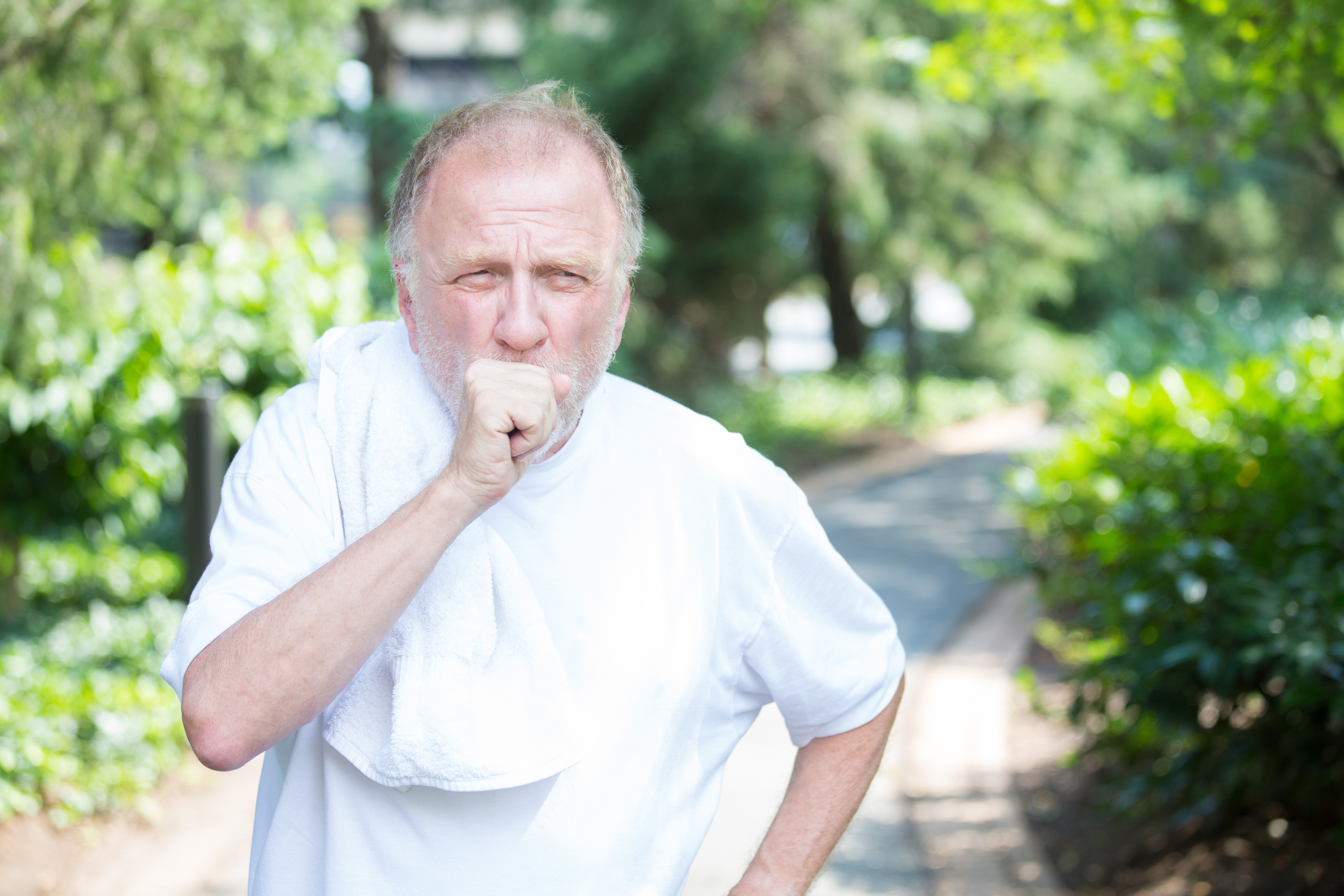
“How can breath training help?
Emphysema is a condition in which damage has occurred to the alveoli or lung tissue. Emphysema is often referred to as COAD (Chronic Obstructive Airway Disease). The more severe the condition the more damage to the lungs that has occurred. The alveoli (air sacs), of which there are over 300 million in each person, lose their tone and can no longer work efficiently. This results in a smaller surface area for the gas exchange to occur. The typical symptoms of emphysema are breathlessness, noisy or wheezy breathing, fatigue on activity and inability to exercise without severe breathlessness. This is due to the inefficient oxygen exchange.
Most people actually only use a small percentage of their lung capacity even when healthy so it would seem a reasonable approach to this condition to improve the efficiency of oxygenation with the reduced available lung capacity that still functions.
This is the approach of the Buteyko Method and although it may not reverse the lung damage causing the patient breathing problems it will allow them to get the optimal oxygenation from the remaining tissue.
It is normally not expected that the damage to the lungs is improved with the Buteyko Method, but by learning to breathe correctly with the Buteyko Method it is possible to significantly improve the oxygen exchange despite the existing damage.
People who attend the Buteyko Course for emphysema/COAD/COPD, typically experience a reduction in the use of reliever medication, reduced mucus production and less coughing. Watch the BBC QED video in the asthma section. Improved breathing will increase the efficiency of oxygenation of all the body tissues, so even with reduced lung capacity you will be able to function better.
Asthma, Sinusitis, Hay fever & Rhinitis

“What can breath training do?
Sinusitis like rhinitis will be benefited by normalizing your breathing. Less mucus will be produced and that produced will clear the sinuses easier.
Clinical trials have shown the usual benefits include: less wheezing, less coughing, more energy, better sleep, up to 90% less reliever medication needed, up to 50% less preventive medication needed, no adverse side effects, long-lasting benefits after training and a safe jump to a better asthma management.
We are dedicated to improving the management of asthma with clinically proven training methods and lifestyle advice. Asthma is a growing problem with ever-increasing numbers of children being diagnosed and put on medication for life with all the potential health hazards of side-effects on the development and general health. We believe it needn’t be like this and that individuals, young or old, can learn, in just a few weeks, how to take better control themselves with simple lifestyle changes and breathing exercises to correct the dysfunctional breathing.
The Buteyko Method is endorsed by the British Thoracic Society and GINA (Global initiative for asthma for Class A evidence.)”
Asthma, Sinusitis, Hay fever & Rhinitis
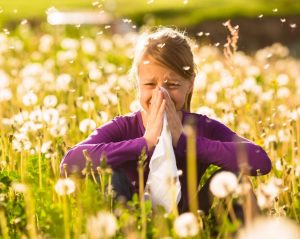
“What can breath training do for hay fever?
Hay fever is like asthma of the nose and the same advice given for asthmas relief applies here.
Normalizing our breathing will:
Retain the right level of carbon dioxide
Will reduce the quantity of irritants inhaled
Will reduce histamine production and hence sensitivity to irritants
Less air flow through the nose will reduce drying and reduce need for increased mucus.
Clinical trials have shown the usual benefits include: less wheezing, less coughing, more energy, better sleep, up to 90% less reliever medication needed, up to 50% less preventive medication needed, no adverse side effects, long-lasting benefits after training and a safe jump to a better asthma management.
We are dedicated to improving the management of asthma with clinically proven training methods and lifestyle advice. Asthma is a growing problem with ever-increasing numbers of children being diagnosed and put on medication for life with all the potential health hazards of side-effects on the development and general health. We believe it needn’t be like this and that individuals, young or old, can learn, in just a few weeks, how to take better control themselves with simple lifestyle changes and breathing exercises to correct the dysfunctional breathing.

The Buteyko Method is endorsed by the British Thoracic Society and GINA (Global initiative for asthma for Class A evidence.)”
Asthma, Sinusitis, Hay fever & Rhinitis
Take a few minutes to watch this clinical trial of the Buteyko Method, just click on the image. 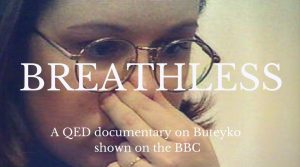
An alternative viewpoint of asthma, just click on the image on the right. 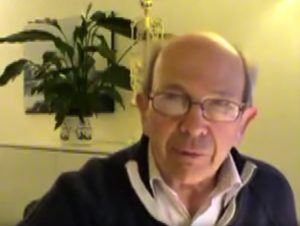
“What can breath training do?
Clinical trials have shown the usual benefits include: less wheezing, less coughing, more energy, better sleep, up to 90% less reliever medication needed, up to 50% less preventive medication needed, no adverse side effects, long-lasting benefits after training and a safe jump to a better asthma management.
We are dedicated to improving the management of asthma with clinically proven training methods and lifestyle advice. Asthma is a growing problem with ever-increasing numbers of children being diagnosed and put on medication for life with all the potential health hazards of side-effects on the development and general health. We believe it needn’t be like this and that individuals, young or old, can learn, in just a few weeks, how to take better control themselves with simple lifestyle changes and breathing exercises to correct the dysfunctional breathing.
In numerous clinical trials The Buteyko Method training has given consistent benefits to asthma sufferers: over 75% reduction in the need for reliever medication, often eliminated altogether, up to 50% reduction in preventer medfication, less wheezing, less coughing, less breathlessness and general improved quality of life.
The Buteyko Method is endorsed by the British Thoracic Society and GINA (Global initiative for asthma for Class A evidence.)”
The Asthma Cycle

Asthma Medication

Insomnia Snoring and Sleep Apnoea
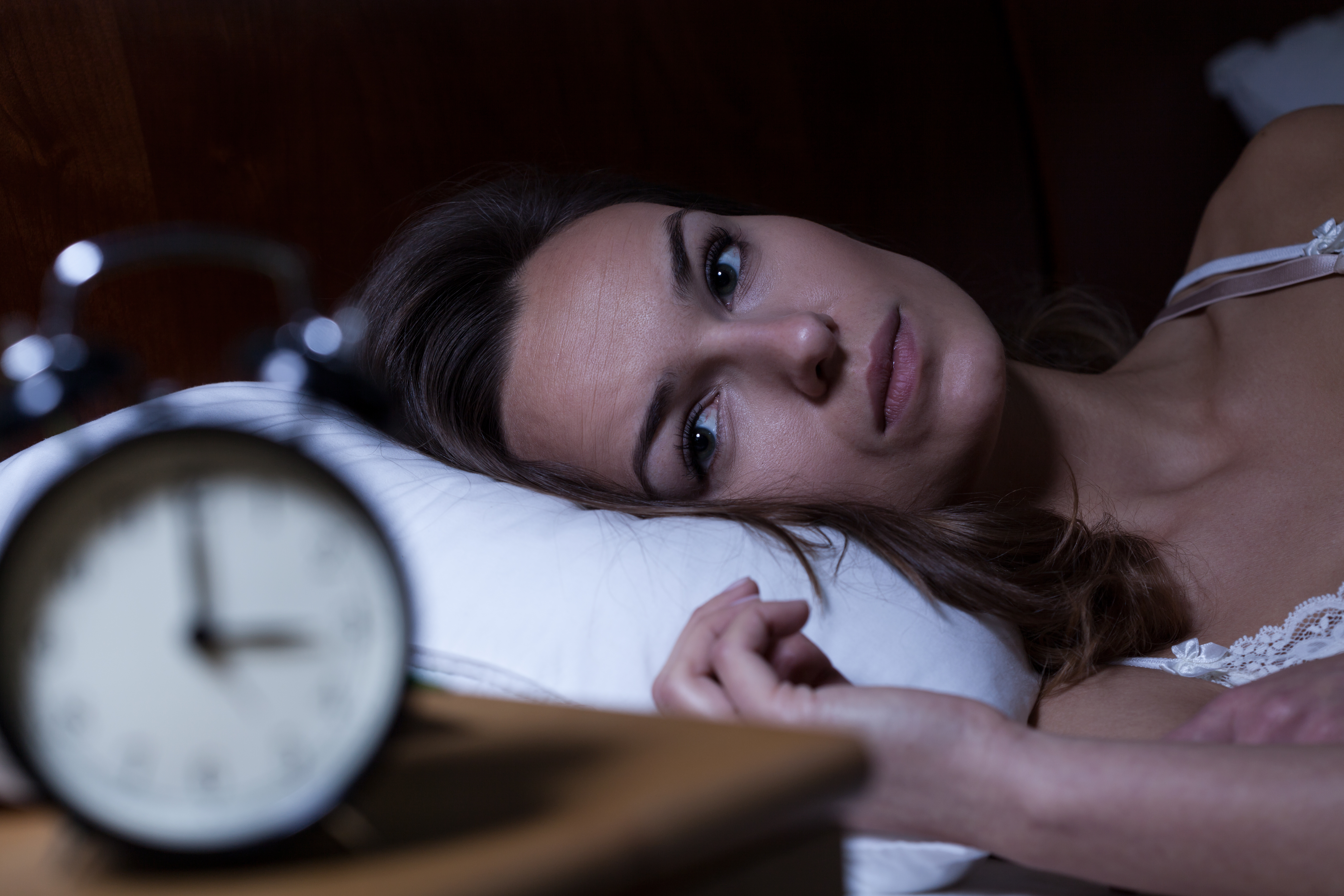
“Hyperventilation and sleep problems are closely associated. Hyperventilation is considered to be the fundamental cause of OSA (obstructive sleep apnoea) according to Professor Buteyko’s theory. He argued the apneas, or pauses in breathing, which occur in OSA are the body’s defence mechanism against the excessive loss of carbon dioxide due to hyperventilation and consequent hypoxia. Hyperventilation also causes collapse of the relaxed airways due to the associated rapid airflow. Breathing retraining with the Buteyko method offers a safe, effective, convenient and more appealing option for people with OSA or CSA which can usually eliminate the need for surgery, oral appliances, or CPAP machines. We are now able to offer sleep studies in your own home (UK only) using a pulse oximeter worn overnight on your wrist for constant measurement of oxygen concentration and pulse rate during your sleep. This information is then downloaded to a computer for assessment.
People who hyperventilate (over-breathe) may suffer from: repeatedly waking during the night, waking up tired instead of refreshed, vivid dreams and nightmares, having extra mucus on waking, talking or walking during sleep, waking with a dry mouth and snoring and insomnia.”
Insomnia Snoring and Sleep Apnoea

Snoring is generally regarded as an annoying and perhaps amusing problem for most people but in fact it may well indicate the presence of chronic hyperventilation and all the health problems this can cause. There is research that suggests severe snoring may be a precursor of heart disease.
Hyperventilation and sleep problems are closely associated. Hyperventilation is considered to be the fundamental cause of OSA (obstructive sleep apnoea) according to Professor Buteyko’s theory. He argued the apneas, or pauses in breathing, which occur in OSA are the body’s defence mechanism against the excessive loss of carbon dioxide due to hyperventilation and consequent hypoxia. Hyperventilation also causes collapse of the relaxed airways due to the associated rapid airflow. Breathing retraining with the Buteyko method offers a safe, effective, convenient and more appealing option for people with OSA or CSA which can usually eliminate the need for surgery, oral appliances, or CPAP machines. We are now able to offer sleep studies in your own home (UK only) using a pulse oximeter worn overnight on your wrist for constant measurement of oxygen concentration and pulse rate during your sleep. This information is then downloaded to a computer for assessment.
People who hyperventilate (over-breathe) may suffer from: repeatedly waking during the night, waking up tired instead of refreshed, vivid dreams and nightmares, having extra mucus on waking, talking or walking during sleep, waking with a dry mouth and snoring and insomnia.”
Insomnia Snoring and Sleep Apnoea

As a person relaxes and prepares for sleep, the breathing pattern lessens slightly, creating a small rise in carbon dioxide. This might be resisted at first as the respiratory centre adjusts and the nervous system relaxes, encouraging sleep. (Jennet 1994). To remain asleep, this small rise in carbon dioxide level needs to be maintained. When babies are asleep, their breathing is so gentle that it is hard to see any movement when sleeping. To meet the demands of metabolism during sleep, it is only necessary to breathe through one nostril, and this is normally achieved by lying on one side. The nostril that is closest to the pillow fills with fluid while the other is breathed through. When the working nostril tires, it causes the person to roll over and the reverse happens. (Cole 1984). This cycle is repeated several times a night and ensures a sound sleep because backache, cramp, numbness and circulatory problems (Davies 1989) can occur if the person stays in one position for too long. Beingable to breathe through your nose is therefore vital for sound sleep,because with a chronically blocked nose it is impossible to maintain this cycle (Barelli 1984) The fastest way to block up your nose is to breathe too much air, especially through the mouth, which is why lying on the back tends to encourage poor sleep patterns. In this position the jaw is likely to relax so much that the mouth falls open and facilitates loss of carbon dioxide, as well as heat and water from the lungs, throat and mouth.
“Hyperventilation and sleep problems are closely associated. Hyperventilation is considered to be the fundamental cause of OSA (obstructive sleep apnoea) according to Professor Buteyko’s theory. He argued the apneas, or pauses in breathing, which occur in OSA are the body’s defence mechanism against the excessive loss of carbon dioxide due to hyperventilation and consequent hypoxia. Hyperventilation also causes collapse of the relaxed airways due to the associated rapid airflow. Breathing retraining with the Buteyko method offers a safe, effective, convenient and more appealing option for people with OSA or CSA which can usually eliminate the need for surgery, oral appliances, or CPAP machines. We are now able to offer sleep studies in your own home (UK only) using a pulse oximeter worn overnight on your wrist for constant measurement of oxygen concentration and pulse rate during your sleep. This information is then downloaded to a computer for assessment.
People who hyperventilate (over-breathe) may suffer from: repeatedly waking during the night, waking up tired instead of refreshed, vivid dreams and nightmares, having extra mucus on waking, talking or walking during sleep, waking with a dry mouth and snoring and insomnia.”
Insomnia Snoring and Sleep Apnoea

“Hyperventilation and sleep problems are closely associated. Hyperventilation is considered to be the fundamental cause of OSA (obstructive sleep apnoea) according to Professor Buteyko’s theory. He argued the apneas, or pauses in breathing, which occur in OSA are the body’s defence mechanism against the excessive loss of carbon dioxide due to hyperventilation and consequent hypoxia. Hyperventilation also causes collapse of the relaxed airways due to the associated rapid airflow. Breathing retraining with the Buteyko method offers a safe, effective, convenient and more appealing option for people with OSA or CSA which can usually eliminate the need for surgery, oral appliances, or CPAP machines. We are now able to offer sleep studies in your own home (UK only) using a pulse oximeter worn overnight on your wrist for constant measurement of oxygen concentration and pulse rate during your sleep. This information is then downloaded to a computer for assessment.
People who hyperventilate (over-breathe) may suffer from: repeatedly waking during the night, waking up tired instead of refreshed, vivid dreams and nightmares, having extra mucus on waking, talking or walking during sleep, waking with a dry mouth and snoring and insomnia.”
Insomnia Snoring and Sleep Apnoea
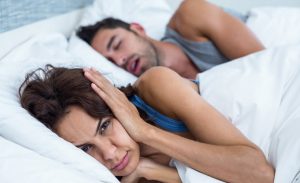 CLICK ON THIS IMAGE FOR MORE INFORMATION
CLICK ON THIS IMAGE FOR MORE INFORMATION
Snoring night after night can often develop into the more serious sleep apnoea. Sleep apnoea means that while sleeping, the person has periods of breathing quite vigorously and periods of not breathing at all. There are two major & overlapping causes of sleep apnoea; obstruction in the airways and sleep reduction in the drive to breathe. (OSA & CSA)
During sleep there are two types of sleep patterns, rapid eye movement, REM that is when dreaming approximately 80% of sleep time (Tortora 1984), breathing is critically dependent on carbon dioxide pressure. As soon as the carbon dioxide pressure drops, the breathing initiates the next breath. (Skatrud 1995) Like snoring, sleep apnoea tends to get worse as the person gets older, fatter and after drinking alcohol. Getting worse means more episodes of apnoea, which in some cases are short but reach up to 160 times per hour, while others are less frequent but can be as much as 90 seconds long. To stop breathing 300 to 400 times a night for at least 10 seconds is common in people with sleep apnoea. It has been linked to the same health problems of snoring and also diminished ability to think clearly or remember things, headaches, impotence, daytime fatigue, which can sometimes be so severe that the person will fall asleep driving a car, emotional and often irrational behaviour such as jealousy, suspicion, hostility and paranoia. (Davies 1993), Lumb 2000)Partners of people with sleep apnoea typically also sleep badly because if the snoring does not wake them, then the silence does.
Hyperventilation and sleep problems are closely associated. Hyperventilation is considered to be the fundamental cause of OSA (obstructive sleep apnoea) according to Professor Buteyko’s theory. He argued the apneas, or pauses in breathing, which occur in OSA are the body’s defence mechanism against the excessive loss of carbon dioxide due to hyperventilation and consequent hypoxia. Hyperventilation also causes collapse of the relaxed airways due to the associated rapid airflow. Breathing retraining with the Buteyko method offers a safe, effective, convenient and more appealing option for people with OSA or CSA which can usually eliminate the need for surgery, oral appliances, or CPAP machines. We are now able to offer sleep studies in your own home (UK only) using a pulse oximeter worn overnight on your wrist for constant measurement of oxygen concentration and pulse rate during your sleep. This information is then downloaded to a computer for assessment.
People who hyperventilate (over-breathe) may suffer from: repeatedly waking during the night, waking up tired instead of refreshed, vivid dreams and nightmares, having extra mucus on waking, talking or walking during sleep, waking with a dry mouth and snoring and insomnia.”
Circulation, Angina, Hypertension & Arrhythmias

Hyperventilation can damage your heart- yet another reason to learn to breathe normally?
Myocardial infarction, otherwise known as a heart attack, occurs when blood flow that brings oxygen to the heart is severely reduced or cut off altogether. The stoppage of blood resulting in oxygen starvation and damage to part of the heart muscle is a heart attack.
Heart attacks often occur during or following physical exercise or emotional stress. Both activities increase breathing volume, and when breathing volume is greater than metabolic needs, carbon dioxide is removed from the lungs and, hence, the blood, resulting in reduced blood flow and oxygenation of the heart.
In a paper entitled “Hyperventilation and Myocardial Infarction,” Chelmowski et al.(1988) wrote, “In addition to causing peripheral and cerebral vaso-constriction, hyperventilation has also been shown to cause diminished coronary blood flow. Oxygen delivery to the myocardium and other tissues is further decreased in alkalosis because of increased haemoglobin oxygen affinity according to the Bohr effect”.
Cardiac arrest is different from a heart attack. The principle cause of a cardiac arrest is the electrical signals, which control the timing and organisation of the heartbeat, becoming completely chaotic. When the signals degenerate into total chaos, the heart suddenly stops beating, cutting off normal circulation to the rest of the body. While the causes of cardiac arrest are numerous; by far the most common in adults is ischemic cardiovascular disease. Breathing in excess of normal metabolic requirements causes a loss of carbon dioxide from the blood, leading to hypocapnia. Hypocapnia alters oxygenation of the heart and cardiac rhythm.
Breathing exercises aimed at normalizing breathing volume provide therapeutic benefits to recovering cardiac patients.
Why not check your breathing?
It takes less than a minute. See YouTube clip “Check your own breathing” HERE
If your CP (Control Pause) is less than 20 seconds you would be well advised to improve your breathing. Don’t forget you can learn to improve your breathing anywhere in the world with our Skype Course.
“How can breath training help? Breathing and heart function intimately connected. These two functions work together to ensure our bodies are well oxygenated, well nourished well protected from infections or damage. Anyone can therefore understand why dysfunctional breathing may be contributing to a wide range of circulatory or cardiac problems. It would reasonably follow that improve breathing patterns will be of benefit to any of these conditions. Better briefing will complement any other treatment that is being given even safely reduce the need for medication, with the approval of the doctor. The benefits after training on long-lasting breathing exercises are not continued once normal breathing patterns are established breath training is a safe adjunct of aid to better cardiac management.
Hyperventilation or over-breathing reduces the level of carbon dioxide in the body, this causes the smooth muscle around arteries to spasm and constrict the circulation of blood, that in turn leads to increased blood pressure. The lowered CO2 in the body impairs the release of oxygen from the blood and hence a greater volume of blood is needed to supply the body’s needs, further increasing the need for a higher blood pressure and more strain on the heart.
Peter Nixon, a British cardiologist suggested that 80% of people suffering from angina are primarily suffering from hyperventilation (Perera 1988)”
Circulation, Angina, Hypertension & Arrhythmias

Always remember that impaired oxygenation of heart muscle tissue may also be due in part to the build up of fatty plaques associated with high cholesterol consumption, see the section on the Food Connection for more details.
“How can breath training help? Breathing and heart function intimately connected. These two functions work together to ensure our bodies are well oxygenated, well nourished well protected from infections or damage. Anyone can therefore understand why dysfunctional breathing may be contributing to a wide range of circulatory or cardiac problems. It would reasonably follow that improve breathing patterns will be of benefit to any of these conditions. Better briefing will complement any other treatment that is being given even safely reduce the need for medication, with the approval of the doctor. The benefits after training on long-lasting breathing exercises are not continued once normal breathing patterns are established breath training is a safe adjunct of aid to better cardiac management.
Hyperventilation or over-breathing reduces the level of carbon dioxide in the body, this causes the smooth muscle around arteries to spasm and constrict the circulation of blood, that in turn leads to increased blood pressure. The lowered CO2 in the body impairs the release of oxygen from the blood and hence a greater volume of blood is needed to supply the body’s needs, further increasing the need for a higher blood pressure and more strain on the heart.
Peter Nixon, a British cardiologist suggested that 80% of people suffering from angina are primarily suffering from hyperventilation (Perera 1988)”
Circulation, Angina, Hypertension & Arrhythmias

“How can breath training help? Breathing and heart function intimately connected. These two functions work together to ensure our bodies are well oxygenated, well nourished well protected from infections or damage. Anyone can therefore understand why dysfunctional breathing may be contributing to a wide range of circulatory or cardiac problems. It would reasonably follow that improve breathing patterns will be of benefit to any of these conditions. Better briefing will complement any other treatment that is being given even safely reduce the need for medication, with the approval of the doctor. The benefits after training on long-lasting breathing exercises are not continued once normal breathing patterns are established breath training is a safe adjunct of aid to better cardiac management.
Hyperventilation or over-breathing reduces the level of carbon dioxide in the body, this causes the smooth muscle around arteries to spasm and constrict the circulation of blood, that in turn leads to increased blood pressure. The lowered CO2 in the body impairs the release of oxygen from the blood and hence a greater volume of blood is needed to supply the body’s needs, further increasing the need for a higher blood pressure and more strain on the heart.
Peter Nixon, a British cardiologist suggested that 80% of people suffering from angina are primarily suffering from hyperventilation (Perera 1988)”
Circulation, Angina, Hypertension & Arrhythmias

“How can breath training help? Breathing and heart function intimately connected. These two functions work together to ensure our bodies are well oxygenated, well nourished well protected from infections or damage. Anyone can therefore understand why dysfunctional breathing may be contributing to a wide range of circulatory or cardiac problems. It would reasonably follow that improve breathing patterns will be of benefit to any of these conditions. Better briefing will complement any other treatment that is being given even safely reduce the need for medication, with the approval of the doctor. The benefits after training on long-lasting breathing exercises are not continued once normal breathing patterns are established breath training is a safe adjunct of aid to better cardiac management.
Hyperventilation or over-breathing reduces the level of carbon dioxide in the body, this causes the smooth muscle around arteries to spasm and constrict the circulation of blood, that in turn leads to increased blood pressure. The lowered CO2 in the body impairs the release of oxygen from the blood and hence a greater volume of blood is needed to supply the body’s needs, further increasing the need for a higher blood pressure and more strain on the heart.
Peter Nixon, a British cardiologist suggested that 80% of people suffering from angina are primarily suffering from hyperventilation (Perera 1988)”
Circulation, Angina, Hypertension & Arrhythmias

“How can breath training help? Breathing and heart function intimately connected. These two functions work together to ensure our bodies are well oxygenated, well nourished well protected from infections or damage. Anyone can therefore understand why dysfunctional breathing may be contributing to a wide range of circulatory or cardiac problems. It would reasonably follow that improve breathing patterns will be of benefit to any of these conditions. Better briefing will complement any other treatment that is being given even safely reduce the need for medication, with the approval of the doctor. The benefits after training on long-lasting breathing exercises are not continued once normal breathing patterns are established breath training is a safe adjunct of aid to better cardiac management.
Hyperventilation or over-breathing reduces the level of carbon dioxide in the body, this causes the smooth muscle around arteries to spasm and constrict the circulation of blood, that in turn leads to increased blood pressure. The lowered CO2 in the body impairs the release of oxygen from the blood and hence a greater volume of blood is needed to supply the body’s needs, further increasing the need for a higher blood pressure and more strain on the heart.
Peter Nixon, a British cardiologist suggested that 80% of people suffering from angina are primarily suffering from hyperventilation (Perera 1988)”
Gut and Bladder Problems & IBS

“How will breath training help my bladder problem?
The bladder has a lot of smooth muscle that is immediately caused to spasm when carbon dioxide levels for due to over-breathing.
Hyperventilation causes the pH of the body to be raised and this may trigger increased clearance of urine to release bicarbonate as a means of returning the pH back to normal.
The fight/flight response to stress raises blood pressure and the kidneys may then respond by increased elimination of urine to restore normal blood pressure.
Fear of urgency to use the toilet when out and about may cause more stress and bladder and kidney function. Normalising breathing has the effect of minimizing the adverse reactions of the fight/flight reactions, the Buteyko Method addresses this problem as well as other lifestyle factors.”
Gut and Bladder Problems & IBS

“How will breath training help my gut problems?
The digestive tract and bladder have a lot of smooth muscle that is immediately caused a spasm when carbon dioxide levels for due to over-breathing.
Hyperventilation due to the fight/flight response also increases production of histamines that can cause allergic reactions in the gut.
The normal peristalsis of the gut is disturbed by the spasm of smooth muscle and the digestive process is shutdown as another response to the fight/flight effect.
Thus by normalizing breathing it is possible to reduce the adverse effects on bowel, digestive, bladder and kidney function. Normalising breathing has the effect of minimizing the adverse reactions of the fight/flight reactions, the Buteyko Method addresses this problem as well as other lifestyle factors.”
Gut and Bladder Problems & IBS

“How will breath training help me? The digestive tract and bladder have a lot of smooth muscle that is immediately caused a spasm when carbon dioxide levels for due to over-breathing.
hyperventilation due to the fight/flight response also increases production of histamines that can cause allergic reactions in the gut. Hyperventilation causes the pH of the body to be raised and this may trigger increased clearance of urine to release bicarbonate as a means of returning the pH back to normal. The fight/flight response to stress raises blood pressure and the kidneys may then respond by increased elimination of urine to restore normal blood pressure. The normal peristalsis of the gut is disturbed by the spasm of smooth muscle and the digestive process is shutdown as another response to the fight/flight effect. Thus by normalizing breathing it is possible to reduce the adverse effects on bowel, digestive, bladder and kidney function. Normalising breathing has the effect of minimizing the adverse reactions of the fight/flight reactions, the Buteko Method addresses this problem as well as other lifestyle factors.”
Gut and Bladder Problems & IBS
“How will breath training help me? The digestive tract and bladder have a lot of smooth muscle that is immediately caused a spasm when carbon dioxide levels for due to over-breathing.
hyperventilation due to the fight/flight response also increases production of histamines that can cause allergic reactions in the gut. Hyperventilation causes the pH of the body to be raised and this may trigger increased clearance of urine to release bicarbonate as a means of returning the pH back to normal. The fight/flight response to stress raises blood pressure and the kidneys may then respond by increased elimination of urine to restore normal blood pressure. The normal peristalsis of the gut is disturbed by the spasm of smooth muscle and the digestive process is shutdown as another response to the fight/flight effect. Thus by normalizing breathing it is possible to reduce the adverse effects on bowel, digestive, bladder and kidney function. Normalising breathing has the effect of minimizing the adverse reactions of the fight/flight reactions, the Buteko Method addresses this problem as well as other lifestyle factors.”
Stress Anxiety and Panic Attacks

“Hyperventilation starts to panic attack. Any stress or fright will trigger the fight or flight response that leads to increased breathing (hyperventilation), but with without any increased physical activity, running or fighting, this causes a drop in carbon dioxide levels in the body. This has two main physiological effects, first, as the blood becomes more alkaline, less oxygen is released to the tissue and more lactic acid is produced causing the breathing sensors in the brain to increase the breathing rate. Secondly, the low carbon dioxide levels cause smooth muscle throughout the body to spasm. Blood vessels are affected and narrow, reducing the flow of blood to the brain. For every 1mm of Hg pressure reduction of CO2 the brain receives 2% less blood flow (Raichle1972) This, combined with the Bohr Effect (reduced release of oxygen from the blood), can mean the brain may receive up to 50% less oxygen which is a major stress that can result in feelings of extreme panic. (Ley 1994) The brain reacts by stimulating more breathing and if hyperventilation continues the patient faints. Once this happens the brain releases opiates and breathing slows. (Danavi-Saubie 1978)
Watch this video that explains the link between your breathing and your stress & anxiety HERE“
Stress Anxiety and Panic Attacks

“Hyperventilation starts to panic attack. Any stress or fright will trigger the fight or flight response that leads to increased breathing (hyperventilation), but with without any increased physical activity, running or fighting, this causes a drop in carbon dioxide levels in the body. This has two main physiological effects, first, as the blood becomes more alkaline, less oxygen is released to the tissue and more lactic acid is produced causing the breathing sensors in the brain to increase the breathing rate. Secondly, the low carbon dioxide levels cause smooth muscle throughout the body to spasm. Blood vessels are affected and narrow, reducing the flow of blood to the brain. For every 1mm of Hg pressure reduction of CO2 the brain receives 2% less blood flow (Raichle1972) This, combined with the Bohr Effect (reduced release of oxygen from the blood), can mean the brain may receive up to 50% less oxygen which is a major stress that can result in feelings of extreme panic. (Ley 1994) The brain reacts by stimulating more breathing and if hyperventilation continues the patient faints. Once this happens the brain releases opiates and breathing slows. (Danavi-Saubie 1978)
Watch this video that explains the link between your breathing and your stress & anxiety HERE”
Chronic Fatigue Syndrome & ME

“How breath training can help you. To find yourself feeling tired almost all the time, that any physical activity causes extreme fatigue that may take hours or even days to recover from and to be exhausted almost as much by even mental activities, is the experience and life for sufferers of ME or CFS. This has been made worse in the past by the erroneous belief of many people that such patients were malingerers or hypochondriacs. Diagnosis was difficult because there were no analysis criteria for doctors to rely on, but in 1994 group of chronic fatigue syndrome researchers (Fukuda et al) set down specific criteria as a diagnostic aid.
Chronic over breathing creates cell hypoxia, elevated lactic acid, constant production of free radicals in cells, free radical damage, possible inflammation in various areas of the body, leading to decreased vagal power (Sisto et al,1995), blocked nose and chronic sinusitis, digestive problems, face acne, liver inflammation with abnormal liver test results, and many other pathological effects. Inflammatory processes and the mental state of chronic stress (the fight/flight response) exhaust cortisol reserves (cortisol is a steroid hormone or glucocorticoid produced by the adrenal glands). This explains how Adrenal Fatigue Syndrome chronic insufficiency in cortisol reserves develop. Particularly for most patients, symptoms of chronic fatigue or worse during early morning hours. ( Togo et al, 2008; Guilleminault et al 2008). Chronic fatigue syndrome is reflected in body oxygen levels, and the degree of chronic fatigue syndrome in an individual can be found using a stress free body oxygen test, the Control Pause of the Buteyko Method. The Buteyko Method teaches patients how to eliminate hyperventilation along with other lifestyle measures.”
Stress Anxiety and Panic Attacks

“Hyperventilation starts to panic attack. Any stress or fright will trigger the fight or flight response that leads to increased breathing (hyperventilation), but with without any increased physical activity, running or fighting, this causes a drop in carbon dioxide levels in the body. This has two main physiological effects, first, as the blood becomes more alkaline, less oxygen is released to the tissue and more lactic acid is produced causing the breathing sensors in the brain to increase the breathing rate. Secondly, the low carbon dioxide levels cause smooth muscle throughout the body to spasm. Blood vessels are affected and narrow, reducing the flow of blood to the brain. For every 1mm of Hg pressure reduction of CO2 the brain receives 2% less blood flow (Raichle1972) This, combined with the Bohr Effect (reduced release of oxygen from the blood), can mean the brain may receive up to 50% less oxygen which is a major stress that can result in feelings of extreme panic. (Ley 1994) The brain reacts by stimulating more breathing and if hyperventilation continues the patient faints. Once this happens the brain releases opiates and breathing slows. (Danavi-Saubie 1978)
Watch this video that explains the link between your breathing and your stress & anxiety HERE”
Stress Anxiety and Panic Attacks

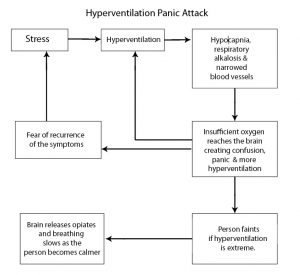
Hyperventilation starts to panic attack. Any stress or fright will trigger the fight or flight response that leads to increased breathing (hyperventilation), but with without any increased physical activity, running or fighting, this causes a drop in carbon dioxide levels in the body. This has two main physiological effects, first, as the blood becomes more alkaline, less oxygen is released to the tissue and more lactic acid is produced causing the breathing sensors in the brain to increase the breathing rate. Secondly, the low carbon dioxide levels cause smooth muscle throughout the body to spasm. Blood vessels are affected and narrow, reducing the flow of blood to the brain. For every 1mm of Hg pressure reduction of CO2 the brain receives 2% less blood flow (Raichle1972) This, combined with the Bohr Effect (reduced release of oxygen from the blood), can mean the brain may receive up to 50% less oxygen which is a major stress that can result in feelings of extreme panic. (Ley 1994) The brain reacts by stimulating more breathing and if hyperventilation continues the patient faints. Once this happens the brain releases opiates and breathing slows. (Danavi-Saubie 1978)
Watch this video that explains the link between your breathing and your stress & anxiety HERE”
Chronic Fatigue Syndrome & ME

“How breath training can help you. To find yourself feeling tired almost all the time, that any physical activity causes extreme fatigue that may take hours or even days to recover from and to be exhausted almost as much by even mental activities, is the experience and life for sufferers of ME or CFS. This has been made worse in the past by the erroneous belief of many people that such patients were malingerers or hypochondriacs. Diagnosis was difficult because there were no analysis criteria for doctors to rely on, but in 1994 group of chronic fatigue syndrome researchers (Fukuda et al) set down specific criteria as a diagnostic aid.
Chronic over breathing creates cell hypoxia, elevated lactic acid, constant production of free radicals in cells, free radical damage, possible inflammation in various areas of the body, leading to decreased vagal power (Sisto et al,1995), blocked nose and chronic sinusitis, digestive problems, face acne, liver inflammation with abnormal liver test results, and many other pathological effects. Inflammatory processes and the mental state of chronic stress (the fight/flight response) exhaust cortisol reserves (cortisol is a steroid hormone or glucocorticoid produced by the adrenal glands). This explains how Adrenal Fatigue Syndrome chronic insufficiency in cortisol reserves develop. Particularly for most patients, symptoms of chronic fatigue or worse during early morning hours. ( Togo et al, 2008; Guilleminault et al 2008). Chronic fatigue syndrome is reflected in body oxygen levels, and the degree of chronic fatigue syndrome in an individual can be found using a stress free body oxygen test, the Control Pause of the Buteyko Method. The Buteyko Method teaches patients how to eliminate hyperventilation along with other lifestyle measures.”
Chronic Fatigue Syndrome & ME

“How breath training can help you. To find yourself feeling tired almost all the time, that any physical activity causes extreme fatigue that may take hours or even days to recover from and to be exhausted almost as much by even mental activities, is the experience and life for sufferers of ME or CFS. This has been made worse in the past by the erroneous belief of many people that such patients were malingerers or hypochondriacs. Diagnosis was difficult because there were no analysis criteria for doctors to rely on, but in 1994 group of chronic fatigue syndrome researchers (Fukuda et al) set down specific criteria as a diagnostic aid.
Chronic over breathing creates cell hypoxia, elevated lactic acid, constant production of free radicals in cells, free radical damage, possible inflammation in various areas of the body, leading to decreased vagal power (Sisto et al,1995), blocked nose and chronic sinusitis, digestive problems, face acne, liver inflammation with abnormal liver test results, and many other pathological effects. Inflammatory processes and the mental state of chronic stress (the fight/flight response) exhaust cortisol reserves (cortisol is a steroid hormone or glucocorticoid produced by the adrenal glands). This explains how Adrenal Fatigue Syndrome chronic insufficiency in cortisol reserves develop. Particularly for most patients, symptoms of chronic fatigue or worse during early morning hours. ( Togo et al, 2008; Guilleminault et al 2008). Chronic fatigue syndrome is reflected in body oxygen levels, and the degree of chronic fatigue syndrome in an individual can be found using a stress free body oxygen test, the Control Pause of the Buteyko Method. The Buteyko Method teaches patients how to eliminate hyperventilation along with other lifestyle measures.”
Stress Anxiety and Panic Attacks

There are many possible factors causing this condition but one that is important and often overlooked is quality of breathing. This is fundamental to optimizing cellular energy and is normally related to some degree of hypoxia.
Recommendations:
Restore normal breathing
Remove excess stress
Improve diet and hydrate well
Get adequate sleep
Improved breathing is the most important because this directly affects metabolism, heart rate and function, nervous system and the body temperature. (Capioppo 1982) Normal breathing ensures optimal oxygenation and the body is better able to cope with stress. Good diet (see the Food Connection) adequate water intake, gentle regular exercise and adequate sleep will all restore body adaptation and energy.
Any stress or fright will trigger the fight or flight response that leads to increased breathing (hyperventilation), but with without any increased physical activity, running or fighting, this causes a drop in carbon dioxide levels in the body. This has two main physiological effects, first, as the blood becomes more alkaline, less oxygen is released to the tissue and more lactic acid is produced causing the breathing sensors in the brain to increase the breathing rate. Secondly, the low carbon dioxide levels cause smooth muscle throughout the body to spasm. Blood vessels are affected and narrow, reducing the flow of blood to the brain. For every 1mm of Hg pressure reduction of CO2 the brain receives 2% less blood flow (Raichle1972) This, combined with the Bohr Effect (reduced release of oxygen from the blood), can mean the brain may receive up to 50% less oxygen which is a major stress that can result in feelings of extreme panic. (Ley 1994) The brain reacts by stimulating more breathing and if hyperventilation continues the patient faints. Once this happens the brain releases opiates and breathing slows. (Danavi-Saubie 1978)
Watch this video that explains the link between your breathing and your stress & anxiety HERE”
Sports Performance and Training

“How will breath training help me?
You may be among the 10% were breathing normally, just because you’re a keen athlete will sportsperson doesn’t necessarily mean your breathing is good. Listen to my podcast “”Health & Fitness, Are They The Same?” HERE
When the question of sports training and fitness is discussed one of the most important factors is usually omitted that is optimal breathing. So the first question is for you “how is your breathing why not check your breathing now?” Your control pause, the measure of quality of your breathing, if it is under 45 seconds then you will benefit enormously health wise and sports wise by improving your breathing.
The benefits of normal breathing for the sports person are numerous and include: increase stamina and endurance, increase muscle development, reduced dehydration, increase performance and exercises, reduction in heart rate, increased energy levels, improve sleep quality, reduce crime due to lactic acid build up, improve recovery after exercise, improve general health and immune system.
Top Sports People who have used Buteyko include: Ramon Andersson (Olympic Kayaker), Emmily Snook (Olympic Rower), Mathew Dunn (Olympic Swimmer), Dion Russell (Walker), Paul Genovesi (Rowers), Craig Riddington (Iron man), Caron Clonda (Squash), & Michael Klim (Swimmer)”
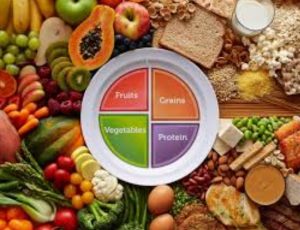
To boost your sports performance even further make sure you’re eating the World’s Finest Diet that more and more top athletes are following. Listen to my podcast show just about this HERE
Sports Performance and Training

“How will breath training help me? You may be among the 10% were breathing normally, just because you’re a keen athlete will sportsperson doesn’t necessarily mean your breathing is good. When the question of sports training and fitness is discussed one of the most important factors is usually omitted that is optimal breathing. So the first question is for you “how is your breathing why not check your breathing now?” Your control pause, the takeover measure of quality really is under 45 seconds then you will benefit enormously health wise and sports wise by improving your breathing. The benefits of normal breathing for the sports person are numerous and include: increase stamina and endurance, increase muscle development, reduced dehydration, increase performance and exercises, reduction in heart rate, increased energy levels, improve sleep quality, reduce crime due to lactic acid build up, improve recovery after exercise, improve general health and immune system. Top Sports People who have used Buteyko include: Ramon Andersson (Olympic Kayaker), Emmily Snook (Olympic Rower), Mathew Dunn (Olympic Swimmer), Dion Russell (Walker), Paul Genovesi (Rowers), Craig Riddington (Iron man), Caron Clonda (Squash), & Michael Klim (Swimmer)”
Sports Performance and Training

How will breath training help me? You may be among the 10% were breathing normally, just because you’re a keen athlete will sportsperson doesn’t necessarily mean your breathing is good. When the question of sports training and fitness is discussed one of the most important factors is usually omitted that is optimal breathing. So the first question is for you “how is your breathing why not check your breathing now?” If your Control Pause, the measure of quality of breathing, is under 45 seconds then you will benefit enormously health wise and sports-wise by improving your breathing.
The benefits of normal breathing for the sports person are numerous and include: increase stamina and endurance, increase muscle development, reduced dehydration, increase performance and exercises, reduction in heart rate, increased energy levels, improve sleep quality, reduce crime due to lactic acid build up, improve recovery after exercise, improve general health and immune system.
Top Sports People who have used Buteyko include: Ramon Andersson (Olympic Kayaker), Emmily Snook (Olympic Rower), Mathew Dunn (Olympic Swimmer), Dion Russell (Walker), Paul Genovesi (Rowers), Craig Riddington (Iron man), Caron Clonda (Squash), & Michael Klim (Swimmer)
You can further optimise your sports performance by eating the “World’s Finest Diet” as many top athletes and sports-people have already discovered. Check out my podcast show “The World’s Finest Diet”
Sports Performance and Training

“How will breath training help me? You may be among the 10% were breathing normally, just because you’re a keen athlete will sportsperson doesn’t necessarily mean your breathing is good. When the question of sports training and fitness is discussed one of the most important factors is usually omitted that is optimal breathing. So the first question is for you “how is your breathing why not check your breathing now?” Your control pause, the takeover measure of quality really is under 45 seconds then you will benefit enormously health wise and sports wise by improving your breathing. The benefits of normal breathing for the sports person are numerous and include: increase stamina and endurance, increase muscle development, reduced dehydration, increase performance and exercises, reduction in heart rate, increased energy levels, improve sleep quality, reduce crime due to lactic acid build up, improve recovery after exercise, improve general health and immune system. Top Sports People who have used Buteyko include: Ramon Andersson (Olympic Kayaker), Emmily Snook (Olympic Rower), Mathew Dunn (Olympic Swimmer), Dion Russell (Walker), Paul Genovesi (Rowers), Craig Riddington (Iron man), Caron Clonda (Squash), & Michael Klim (Swimmer)”
Sports Performance and Training

“How will breath training help me? You may be among the 10% were breathing normally, just because you’re a keen athlete will sportsperson doesn’t necessarily mean your breathing is good. When the question of sports training and fitness is discussed one of the most important factors is usually omitted that is optimal breathing. So the first question is for you “how is your breathing why not check your breathing now?” Your control pause, the takeover measure of quality really is under 45 seconds then you will benefit enormously health wise and sports wise by improving your breathing. The benefits of normal breathing for the sports person are numerous and include: increase stamina and endurance, increase muscle development, reduced dehydration, increase performance and exercises, reduction in heart rate, increased energy levels, improve sleep quality, reduce crime due to lactic acid build up, improve recovery after exercise, improve general health and immune system. Top Sports People who have used Buteyko include: Ramon Andersson (Olympic Kayaker), Emmily Snook (Olympic Rower), Mathew Dunn (Olympic Swimmer), Dion Russell (Walker), Paul Genovesi (Rowers), Craig Riddington (Iron man), Caron Clonda (Squash), & Michael Klim (Swimmer)”
Orthodontic Dental Problems Gum Disease
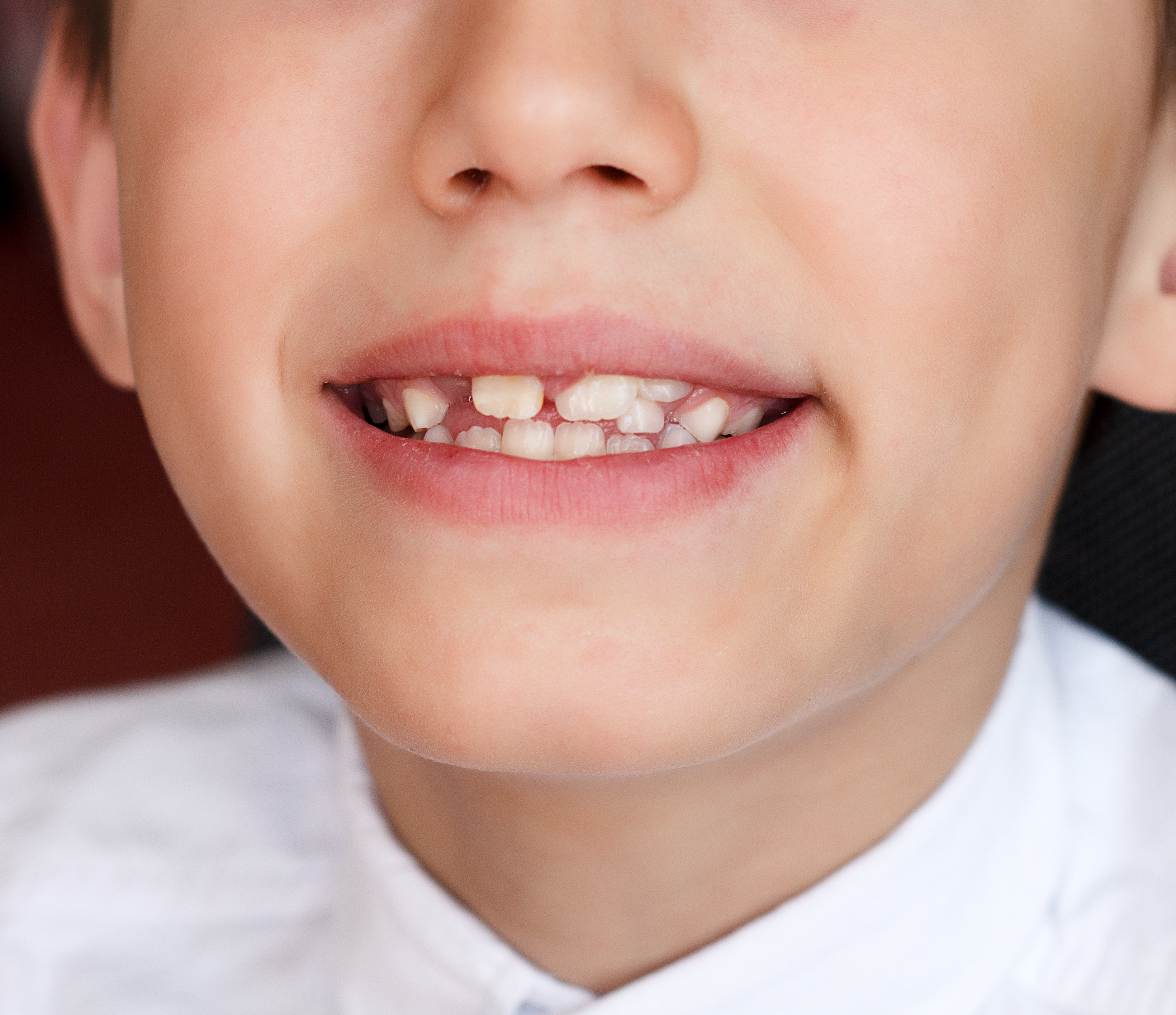
If your child is a habitual mouth-breather it is very likely he or she will develop orthodontic problems; crooked teeth, malocclusions, crowded teeth etc.
You can test this on yourself in under a minute:
Test this out for yourself!
Let’s start with a simple fact you can check with your dentist or orthodontist; a pressure of 3 grams applied 24/7 to a tooth will cause it to move to a new location – this is how braces work. When we nose-breathe the tongue presses on the upper palate and applies some 30 grams pressure all of the time while you are nose-breathing.
Now begin the experiment: open your mouth and breathe through your mouth for half a minute. Note mentally where your tongue is.
Now close your mouth and breathe through your nose for half a minute and once again mentally note where your tongue is now.
Unless you are a rare exception you will have discovered that your tongue rested on the lower teeth when mouth-breathing but pressed up onto the roof of the mouth when nose-breathing. When pressing on the roof of the mouth it is applying about 30 grams of pressure that keeps the upper jaw wide to comfortably hold all the teeth in good position, if the tongue falls to the lower jaw the upper jaw will usually narrow and the teeth will crowd and be crooked. This, in turn, affects the development of the whole facial features. QED!
Most people are quite unaware that breathing has a direct and powerful effect on orthodontic and dental problems. There is plenty of evidence in the literature that mouth breathing has an adverse effect on the growth and development of the face and jaws. All children who habitual mouth-breathe will have a malocclusions,
The mouth-breather’s facial structures do not develop normally. They usually have noticeable overbite, have longer faces, with the narrow upper jaw and reduced lower jaw. This is because the tongue plays a large part in influencing cranial and maxillary growth. When a child is newborn the forward thrusting of the tall to express milk from the mother’s breasts the force that drives the forward growth of the upper jaw. The tongue is ideally in contact with the roof of the mouth at rest and during swallowing. In this position, the tongue exerts a force that keeps the upper jaw space for normal eruption of teeth. In the child that mouth breathes, their tongue falls from the roof of the mouth and no longer provides support for the upper arch. The result is reduced size of the arch and evidenced by crowded or crooked teeth. We have known about this effect for over a hundred years, since an artist George Catlin published a book on the subject after studying the indigenous Indian populations of North and South America.

An excellent video by Dr. John Flutter BDS(London) Dental Surgeon explains this fully HERE”
Orthodontic Dental Problems Gum Disease

Most people are quite unaware that breathing has a direct and powerful effect on orthodontic and dental problems.
If your child habitually mouth-breathes it is very likely he or she will develop othodontic problems ; crooked teeth, crowded teeth or other structural problems in their facial features, most of which could be avoided by teaching normal breathing through the nose. You can appreciate this connection by simply doing a simple experiment on yourself, it will take no more than a minute.
Test this out for yourself!
Let’s start with a simple fact you can check with your dentist or orthodontist; a pressure of 3 grams applied 24/7 to a tooth will cause it to move to a new location – this is how braces work. When we nose-breathe the tongue presses on the upper palate and applies some 30 grams pressure all of the time while you are nose breathing.
Now begin the experiment: open your mouth and breathe through your mouth for half a minute. Note mentally where your tongue is.
Now close your mouth and breathe through your nose for half a minute and once again mentally note where your tongue is now.
Unless you are a rare exception you will have discovered that your tongue rested on the lower teeth when mouth-breathing, but pressed up onto the roof of the mouth when nose -reathing. When pressing on the roof of the mouth it is applying about 30 grams of pressure that keeps the upper jaw wide to comfortably hold all the teeth in good position, if the tongue falls to the lower jaw the upper jaw will usually narrow and the teeth will crowd and be crooked. This, in turn, affects the development of the whole facial features. QED!
There is plenty of evidence in the literature that mouth breathing has an adverse effect on the growth and development of the face and jaws. All children who habitual mouth-breathe will have a malocclusion. The mouth-breather’s facial structures do not develop normally. They usually have noticeable overbite, have longer faces, with the narrow upper jaw and reduced lower jaw. This is because the tongue plays a large part in influencing cranial and maxillary growth. When a child is newborn the forward thrusting of the tall to express milk from the mother’s breasts the force that drives the forward growth of the upper jaw. The tongue is ideally in contact with the roof of the mouth at rest and during swallowing. In this position, the tongue exerts a force that keeps the upper jaw space for normal eruption of teeth. In the child that mouth breathes, their tongue falls from the roof of the mouth and no longer provides support for the upper arch. The result is reduced size of the arch and evidenced by crowded or crooked teeth. We have known about this effect for over a hundred years, since an artist George Catlin published a book on the subject after studying the indigenous Indian populations of North and South America.

An excellent video by Dr. John Flutter BDS(London) Dental Surgeon explains this fully HERE”
Orthodontic Dental Problems Gum Disease

“Most people are quite unaware that breathing has a direct and powerful effect on orthodontic and dental problems. There is plenty of evidence in the literature that mouth breathing has an adverse effect on the growth and development of the face and jaws. All children who habitual mouth-breathe will have a malocclusion. The mouth-breather’s facial structures do not develop normally. They usually have noticeable overbite, have longer faces, with the narrow upper jaw and reduced lower jaw. This is because the tongue plays a large part in influencing cranial and maxillary growth. When a child is newborn the forward thrusting of the tall to express milk from the mother’s breasts the force that drives the forward growth of the upper jaw. The tongue is ideally in contact with the roof of the mouth at rest and during swallowing. In this position, the tongue exerts a force that keeps the upper jaw space for normal eruption of teeth. In the child that mouth breathes, their tongue falls from the roof of the mouth and no longer provides support for the upper arch. The result is reduced size of the arch and evidenced by crowded or crooked teeth. We have known about this effect for over a hundred years, since an artist George Catlin published a book on the subject after studying the indigenous Indian populations of North and South America.
An excellent video by Dr. John Flutter BDS(London) Dental Surgeon explains this fully HERE”
Orthodontic Dental Problems Gum Disease

“Most people are quite unaware that breathing has a direct and powerful effect on orthodontic and dental problems. There is plenty of evidence in the literature that mouth breathing has an adverse effect on the growth and development of the face and jaws. All children who habitual mouth-breathe will have a malocclusion. The mouth-breather’s facial structures do not develop normally. They usually have noticeable overbite, have longer faces, with the narrow upper jaw and reduced lower jaw. This is because the tongue plays a large part in influencing cranial and maxillary growth. When a child is newborn the forward thrusting of the tall to express milk from the mother’s breasts the force that drives the forward growth of the upper jaw. The tongue is ideally in contact with the roof of the mouth at rest and during swallowing. In this position, the tongue exerts a force that keeps the upper jaw space for normal eruption of teeth. In the child that mouth breathes, their tongue falls from the roof of the mouth and no longer provides support for the upper arch. The result is reduced size of the arch and evidenced by crowded or crooked teeth. We have known about this effect for over a hundred years, since an artist George Catlin published a book on the subject after studying the indigenous Indian populations of North and South America.
An excellent video by Dr. John Flutter BDS(London) Dental Surgeon explains this fully HERE”
Free Health Assesment
Every breath you take
British children have the world’s highest level of asthma. But the Buteyko system of lung control means many could soon be breathing a sigh of relief. Robert Schweizer reports By Robert Schweizer
Sunday 27 June 2004
Breathing easy with the Buteyko Method
By SARAH STACEY
Last updated at 16:31 16 July 2007
A Breathing Technique Offers Help for People With Asthma
By Jane E Brody
Published: November 2, 2009
Boost your oxygen uptake for a healthier life
by Michael Lingard
Tuesday, July 1st, 2008
Latest Features
Some of our latest Health Articles
Conquest Hospital Community Radio Magazine
Just click on the front cover of the magazine to open the ebook version. In an effort to help as many people as possible to improve their health
Healthy Lifestyle Podcasts and More!
https://yourhealthinyourhands.simplecast.com/episodes/ Below is the list of Episodes in this podcast: You Can Prevent and Reverse Heart Disease! The most common cause of death in the West
Consciousness is All There Is by Dr.Tony Nader
If "Consciousness is All There Is", as proposed by Dr. Tony Nader in his book of this title, I'd like to give one idea as to how
Why you need to read this book for your health to save time!
If you are interested in improving your health and well-being but haven't got the time to read all the relevant books written by doctors and
Why You May Need to Learn to Breathe Better – The Other 21st Century Epidemic
Do you agree that our breathing is the most important activity in our lives? But it is rare for doctors to check how well we breathe. It should
Chapter Three
Chapter 3 Who Are You, Really? “Example is not the main thing in influencing others; It's the only thing!” Albert Schweitzer (1875 – 1965) This is a






